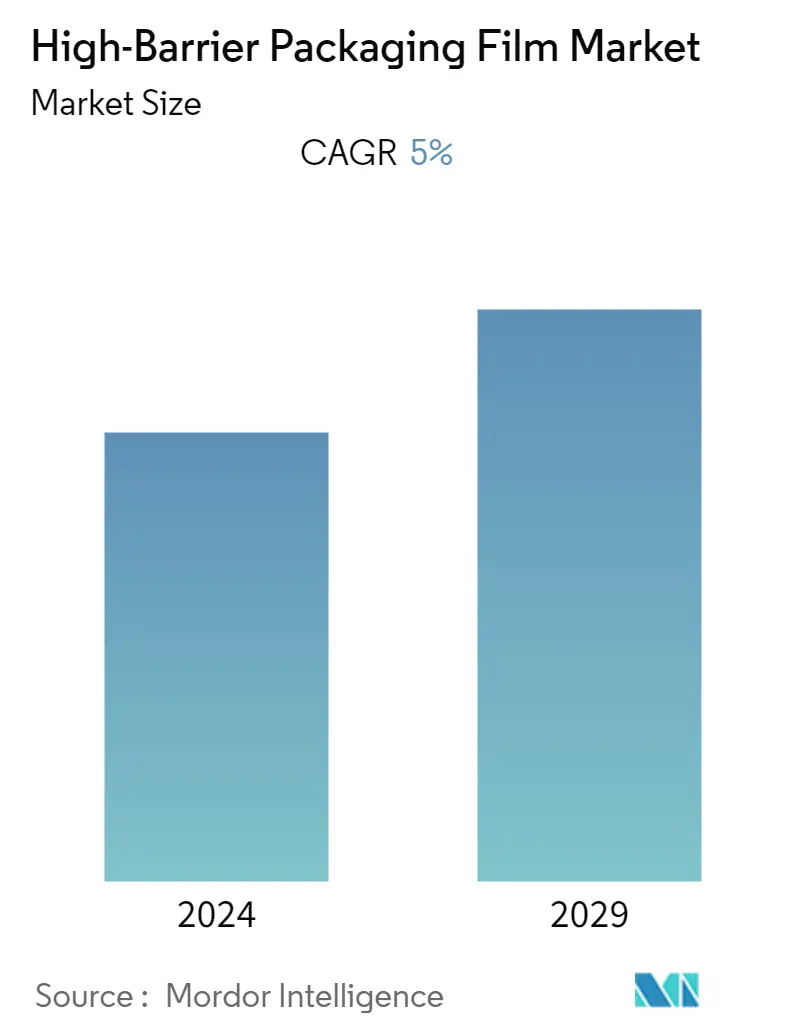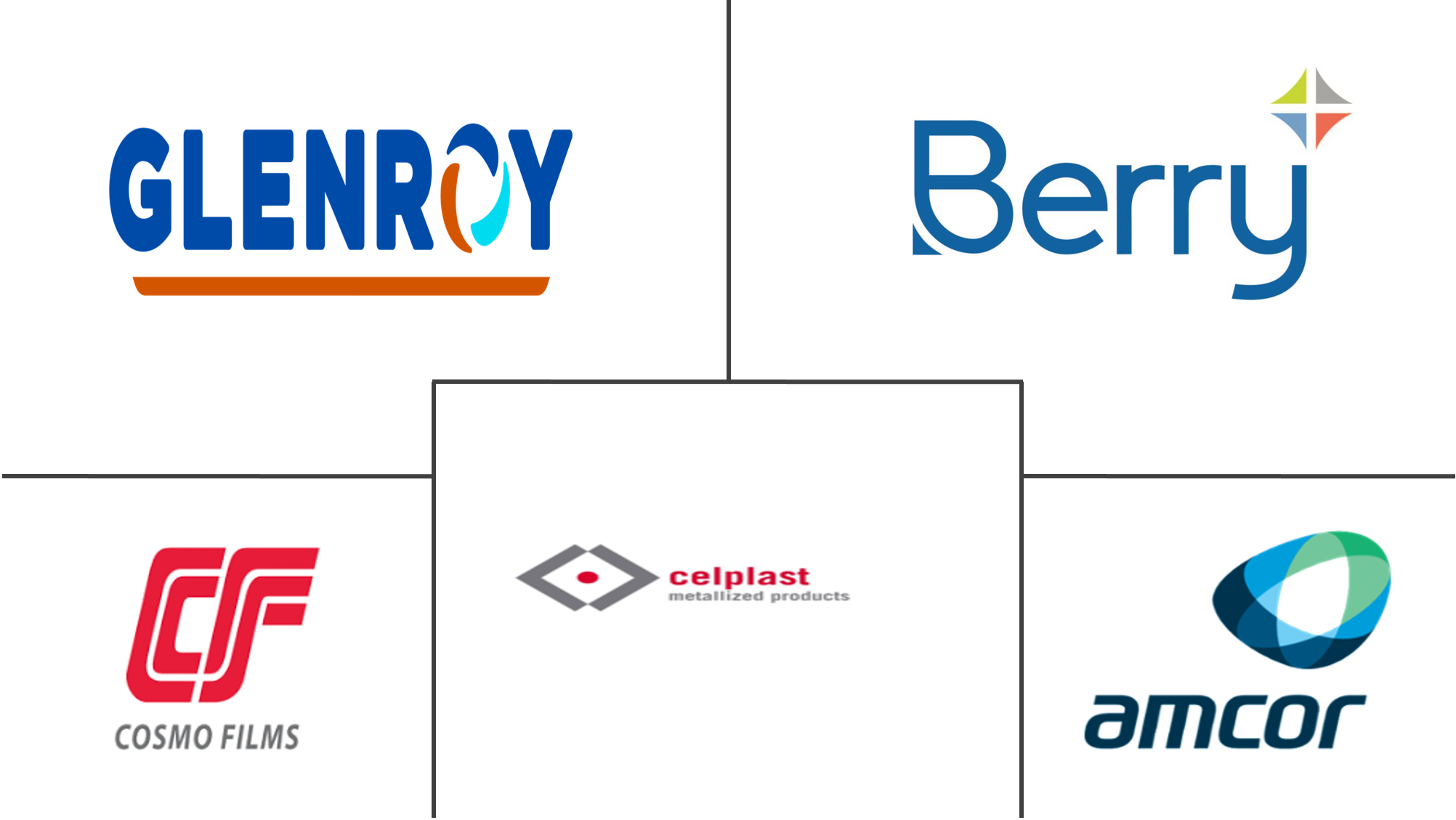Market Size of High-Barrier Packaging Film Industry

| Study Period | 2019 - 2029 |
| Base Year For Estimation | 2023 |
| CAGR | 5.00 % |
| Fastest Growing Market | Asia Pacific |
| Largest Market | North America |
| Market Concentration | Low |
Major Players
*Disclaimer: Major Players sorted in no particular order |
Need a report that reflects how COVID-19 has impacted this market and its growth?
High Barrier Packaging Films Market Analysis
The market for high-barrier packaging film has seen a CAGR of 5% in the upcoming years. Growing urbanization has increased consumer demand for packaged foods. Additionally, goods and user safety concerns have grown to be essential variables, which are anticipated to cause the high-barrier packaging market to expand profitably over the projected year.
- The high-barrier packaging films help to keep oxygen, carbon dioxide, and moisture out while limiting the effects of mineral oil and UV light. This strong barrier, made of functional materials, also retains food qualities such as color, taste, texture, aroma, and flavor. Also, ready-to-eat foods are becoming more popular around the world, which makes people more likely to buy packaged products.
- According to the Food and Agriculture Organization, global meat consumption per capita in 2028 will be 35.1 kilograms, an increase from 34.4 kilograms in 2019. The increasing demand for meat globally propels polyethylene, a high-performing film. These films are ideal for fish, poultry, and meat packaging because they are an excellent oxygen barrier, durable, and heat resistant.
- Moreover, the pharmaceuticals sector poses different demands for packaging solutions regarding insulation from external surroundings, high levels of protection, cost-effectiveness, and ease of handling. Thus, blister base high packaging films are widely used because these films do not allow the exchange of gasses across the packaging and control the temperature within the package, thereby augmenting the market. However, volatile raw material prices and stringent government regulations in specific end-user industries limit the adoption of the high-barrier packaging film market.
- The outbreak is expected to necessitate flexible packaging across various countries. China has a very low consumption rate per capita of flexible packaging for fresh and processed meat and seafood compared to Japan, the United States, and Western Europe. However, the usage increased due to several advantages of flexible packaging solutions, such as live on-site butchering, improved sterilization, traceability, recall, and extended shelf life.
- Due to COVID-19, many Global Food Safety Initiative (GFSI) certification programs are giving six-month certificate extensions by doing a remote audit and risk assessment. This lets the company approve a new supplier location without having to do an on-site audit.
Moreover, with the increasing demand for medical and healthcare supplies, the high-barrier film packaging market is expected to witness significant growth in the future. For instance, Envy Pack is also continuing its operation by supplying medical and healthcare packaging solutions in clear pouches, pockets, and adhesive-backed sleeves, with and without print, to meet the demand.
